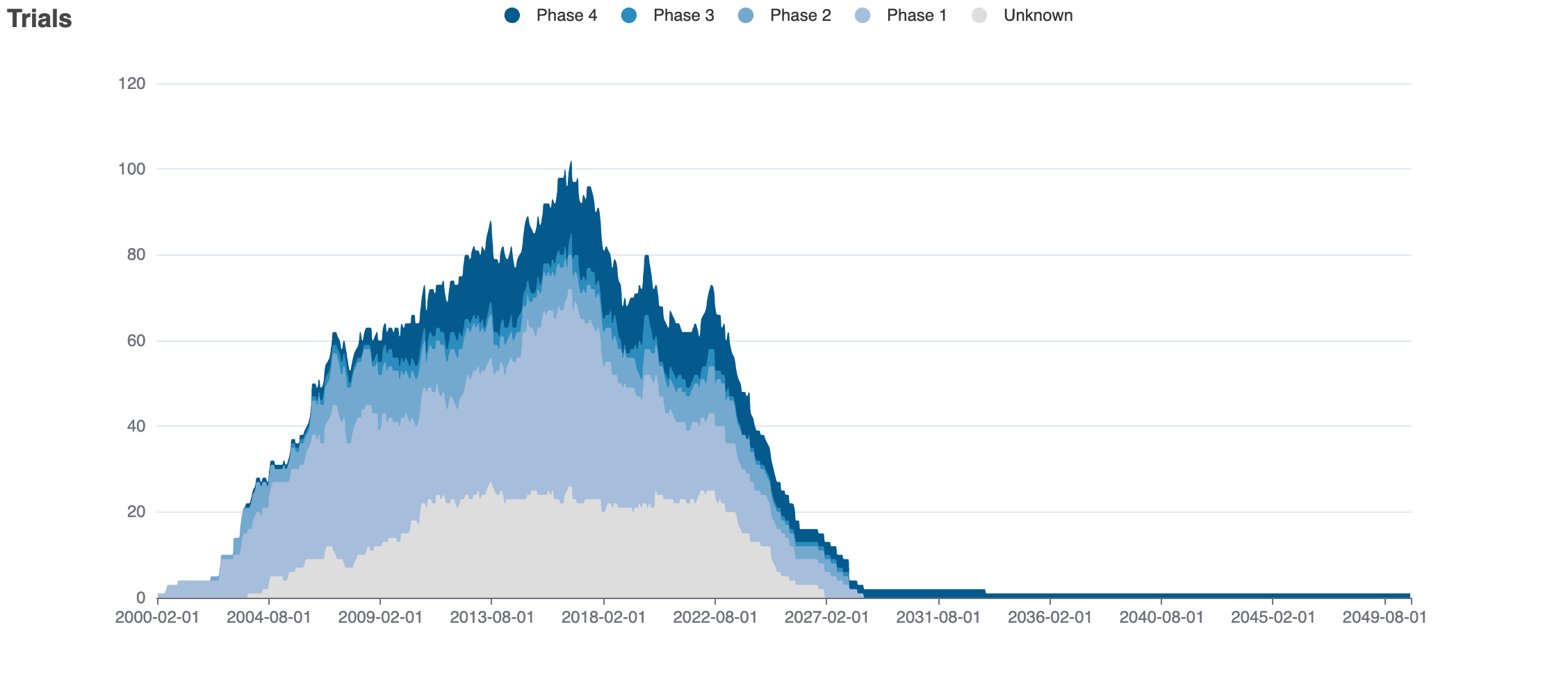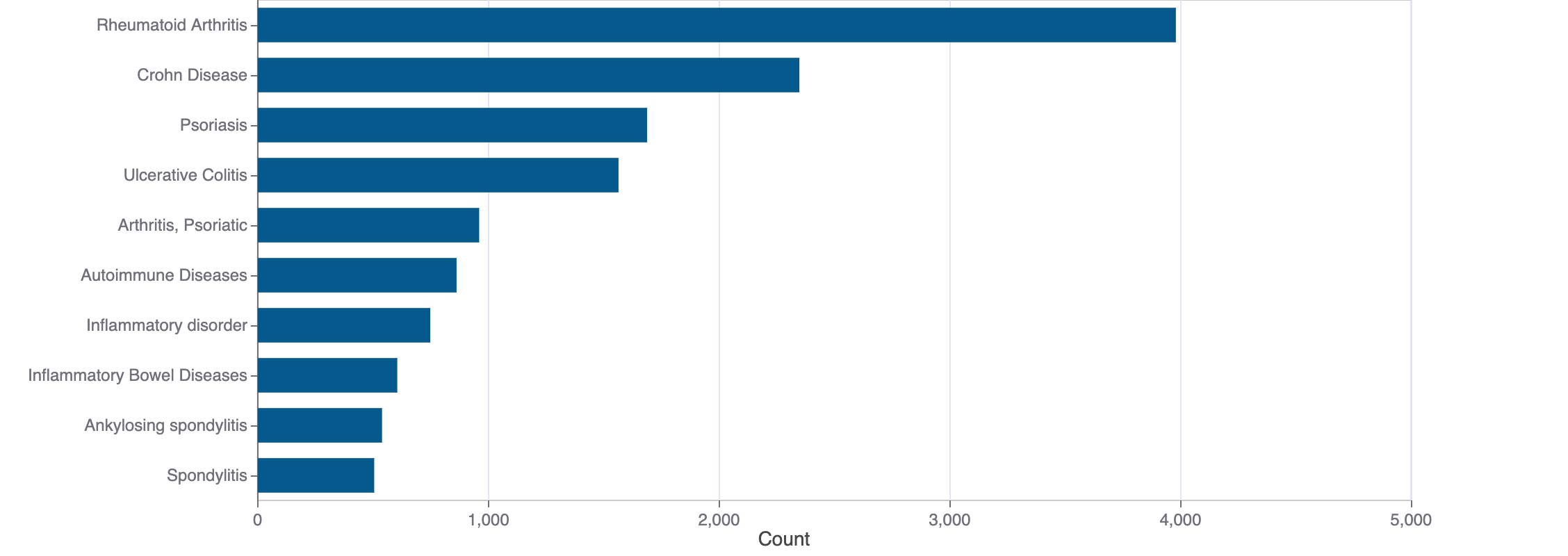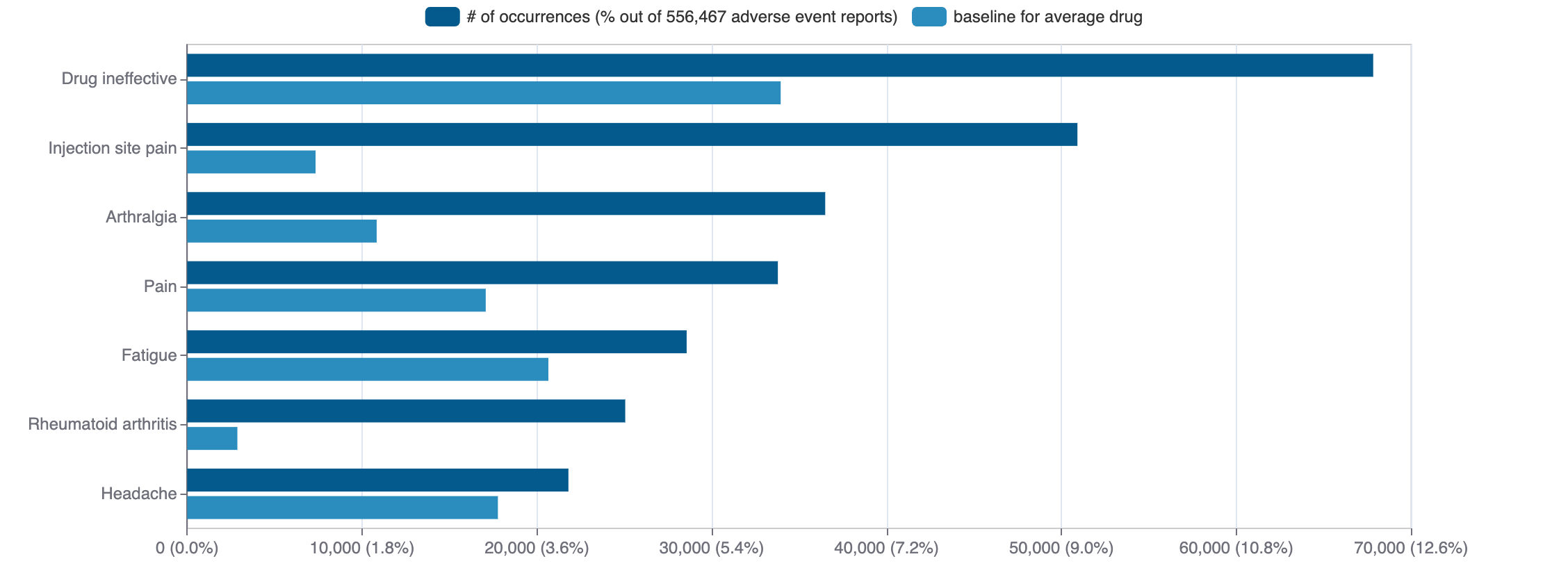Tranylcypromine
Parnate (tranylcypromine) is a small molecule pharmaceutical. Tranylcypromine was first approved as Parnate on 1985-08-16. It is used to treat depressive disorder and post-traumatic stress disorders in the USA. The pharmaceutical is active against amine oxidase [flavin-containing] B and amine oxidase [flavin-containing] A. In addition, it is known to target lysine-specific histone demethylase 1A and prostacyclin synthase.
Download report
Favorite
Commercial
Therapeutic Areas
Therapeutic Area | MeSH |
|---|---|
| mental disorders | D001523 |
Trade Name
FDA
EMA
Parnate (generic drugs available since 2006-06-29)
Drug Products
FDA
EMA
New Drug Application (NDA)
New Drug Application (NDA)
Abbreviated New Drug Application (ANDA)
Abbreviated New Drug Application (ANDA)
Tranylcypromine sulfate
Tradename | Company | Number | Date | Products |
|---|---|---|---|---|
| PARNATE | Concordia Laboratories | N-012342 RX | 1985-08-16 | 1 products, RLD, RS |
Labels
FDA
EMA
Brand Name | Status | Last Update |
|---|---|---|
| parnate | New Drug Application | 2021-01-19 |
| tranylcypromine sulfate | ANDA | 2023-05-26 |
Indications
FDA
EMA
Indication | Ontology | MeSH | ICD-10 |
|---|---|---|---|
| depressive disorder | EFO_1002014 | D003866 | F32.A |
| post-traumatic stress disorders | EFO_0001358 | D013313 | F43.1 |
Agency Specific
FDA
EMA
No data
Patent Expiration
No data
HCPCS
No data
Clinical
Clinical Trials
83 clinical trials
View more details

Mock data
Subscribe for the real data
Subscribe for the real data
Indications Phases 4
Indication | MeSH | Ontology | ICD-10 | Ph 1 | Ph 2 | Ph 3 | Ph 4 | Other | Total |
|---|---|---|---|---|---|---|---|---|---|
| Overactive urinary bladder | D053201 | EFO_1000781 | N32.81 | 6 | 10 | 16 | 14 | 5 | 49 |
| Urinary incontinence | D014549 | HP_0000020 | R32 | — | 1 | 1 | 8 | 1 | 11 |
| Healthy volunteers/patients | — | 2 | — | — | 2 | — | 4 | ||
| Urge urinary incontinence | D053202 | EFO_0006865 | N39.41 | — | — | — | 3 | 1 | 4 |
| Chronic pain | D059350 | HP_0012532 | — | — | — | 2 | — | 2 | |
| Prostatic hyperplasia | D011470 | EFO_0000284 | N40 | — | — | — | 2 | — | 2 |
| Memory | D008568 | — | — | — | 1 | — | 1 | ||
| Cognition | D003071 | EFO_0003925 | — | — | — | 1 | — | 1 | |
| Ureteral obstruction | D014517 | HP_0006000 | — | — | — | 1 | — | 1 | |
| Urinary bladder neck obstruction | D001748 | EFO_1000840 | N32.0 | — | — | — | 1 | — | 1 |
Show 3 more
Indications Phases 3
Indication | MeSH | Ontology | ICD-10 | Ph 1 | Ph 2 | Ph 3 | Ph 4 | Other | Total |
|---|---|---|---|---|---|---|---|---|---|
| Lower urinary tract symptoms | D059411 | EFO_0008008 | — | 1 | 1 | — | 1 | 2 | |
| Low back pain | D017116 | HP_0003419 | M54.5 | — | — | 1 | — | — | 1 |
| Pain | D010146 | EFO_0003843 | R52 | — | — | 1 | — | — | 1 |
| Pelvic organ prolapse | D056887 | EFO_0004710 | — | — | 1 | — | — | 1 |
Indications Phases 2
Indication | MeSH | Ontology | ICD-10 | Ph 1 | Ph 2 | Ph 3 | Ph 4 | Other | Total |
|---|---|---|---|---|---|---|---|---|---|
| Neuralgia | D009437 | EFO_0009430 | 1 | 1 | — | — | — | 1 |
Indications Phases 1
No data
Indications Without Phase
Indication | MeSH | Ontology | ICD-10 | Ph 1 | Ph 2 | Ph 3 | Ph 4 | Other | Total |
|---|---|---|---|---|---|---|---|---|---|
| Prostatitis | D011472 | EFO_0003830 | N41 | — | — | — | — | 1 | 1 |
Epidemiology
Epidemiological information for investigational and approved indications
View more details
Drug
General
| Drug common name | TRANYLCYPROMINE |
| INN | tranylcypromine |
| Description | (1R,2S)-tranylcypromine is a 2-phenylcyclopropan-1-amine that is the (1R,2S)-enantiomer of tranylcypromine. It is a conjugate base of a (1R,2S)-tranylcypromine(1+). It is an enantiomer of a (1S,2R)-tranylcypromine. |
| Classification | Small molecule |
| Drug class | — |
| Image (chem structure or protein) | |
| Structure (InChI/SMILES or Protein Sequence) | N[C@@H]1C[C@H]1c1ccccc1.N[C@H]1C[C@@H]1c1ccccc1 |
Identifiers
| PDB | — |
| CAS-ID | 155-09-9 |
| RxCUI | 10734 |
| ChEMBL ID | CHEMBL3989843 |
| ChEBI ID | — |
| PubChem CID | 19493 |
| DrugBank | DB00752 |
| UNII ID | 3E3V44J4Z9 (ChemIDplus, GSRS) |
Target
Agency Approved
MAOB
MAOB
MAOA
MAOA
Alternate
KDM1A
KDM1A
PTGIS
PTGIS
Organism
Homo sapiens
Gene name
KDM1A
Gene synonyms
AOF2, KDM1, KIAA0601, LSD1
NCBI Gene ID
Protein name
lysine-specific histone demethylase 1A
Protein synonyms
[histone H3]-dimethyl-L-lysine(4) FAD-dependent demethylase 1A, amine oxidase (flavin containing) domain 2, BRAF35-HDAC complex protein BHC110, FAD-binding protein BRAF35-HDAC complex, 110 kDa subunit, Flavin-containing amine oxidase domain-containing protein 2, lysine (K)-specific demethylase 1A, lysine-specific histone demethylase 1
Uniprot ID
Mouse ortholog
Kdm1a (99982)
lysine-specific histone demethylase 1A (Q8VEA1)
Variants
Clinical Variant
No data
Financial
No data
Trends
PubMed Central
Top Terms for Disease or Syndrome:

Mock data
Subscribe for the real data
Subscribe for the real data
Additional graphs summarizing 3,170 documents
View more details
Safety
Black-box Warning
Black-box warning for: Parnate, Tranylcypromine sulfate
Adverse Events
Top Adverse Reactions

Mock data
Subscribe for the real data
Subscribe for the real data
6,967 adverse events reported
View more details
Premium feature
Learn more about premium features at pharmakb.com
Learn more
